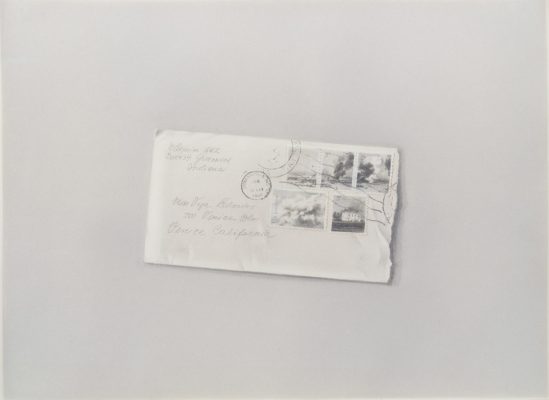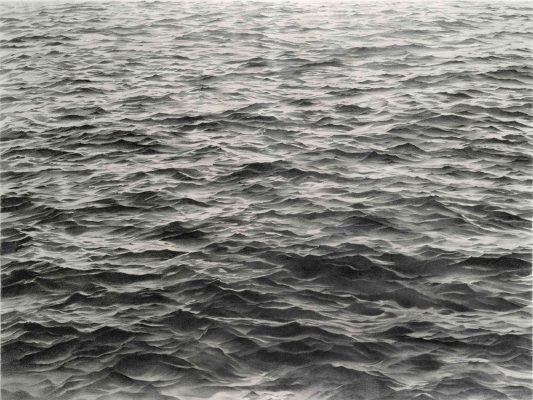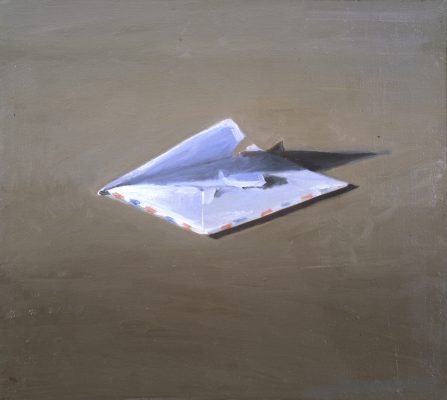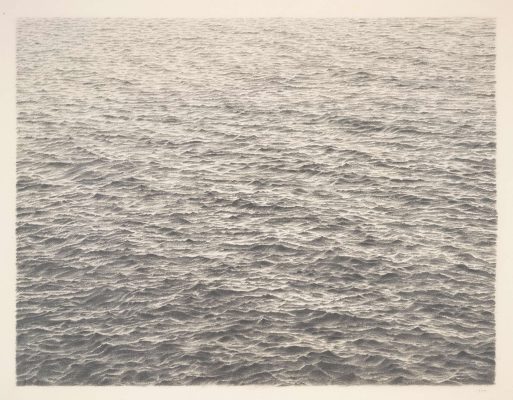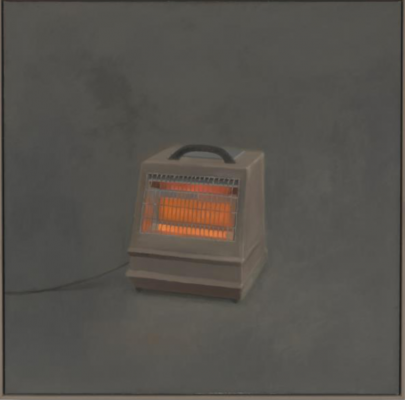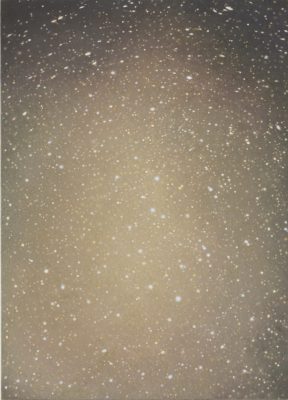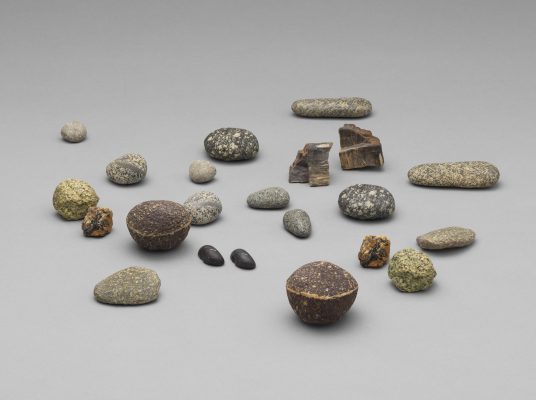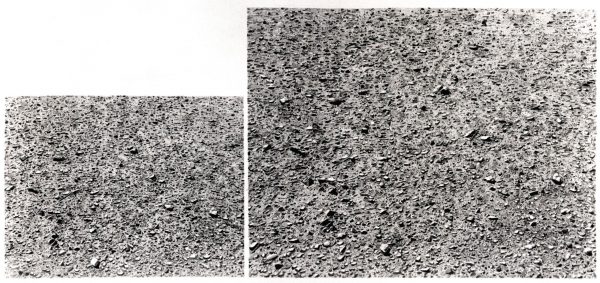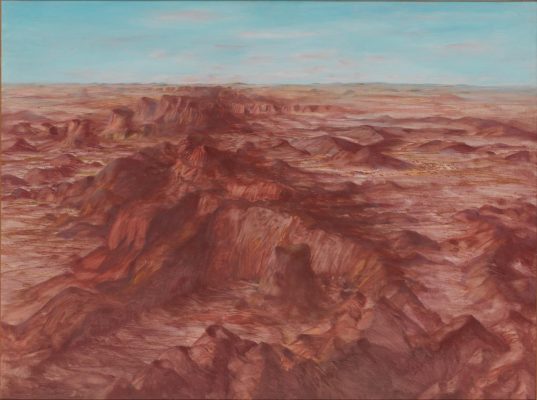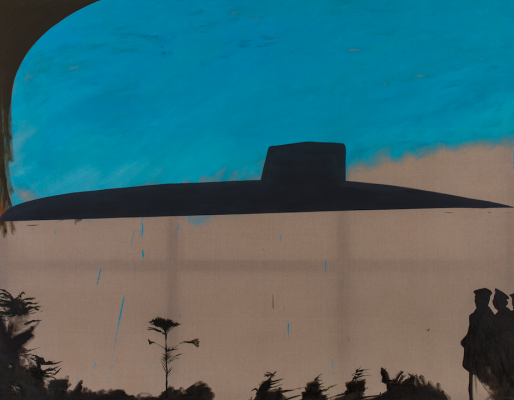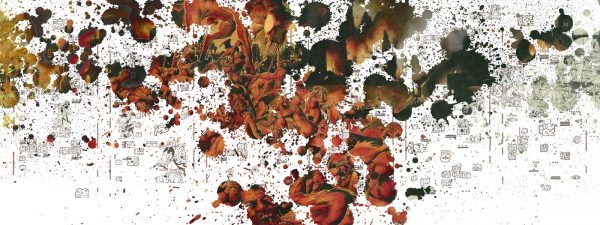‘I crawl over the photograph like an ant, and I document my crawling on another surface,’ Vija Celmins has said of the way she transcribes photographs of vacant spider webs, choppy ocean surfaces, and pointillist night skies into delicately rendered drawings and paintings. Throughout her sixty-year career, the Latvian-born artist has often been mischaracterised as a ‘photorealist’ who mechanically reproduces found images, but such a reading would elide the multitude of sensations contained in her work, which simultaneously depicts its subject and captures her own labour. From afar, her constellations and waves can resemble impersonal, monochromatic screens; yet up close, they reveal expressive streaks of choppy ink. With your nose against the glass, you can even see the seams on her paper, or a watermark in the shape of a lily. Viewed as a whole, Celmins’s works constitute an exercise in learning how to look anew at our own surroundings.
That range is on full display in the more than one hundred works now gathered at the Met Breuer, for her first large-scale retrospective since the 1990s. The career-long survey, which travelled from San Francisco and Toronto, excavates the personal history behind a practice that can seem exclusively formalist. Before the age of ten, Celmins had lived in three refugee camps, in Leipzig, Mannheim, and Esslingen. She has described her process of ‘crawling’ over photographs as an act of ‘redescribing’ – translating an image from one medium into another, most often from photographs into charcoal, oil, or graphite, but also from found objects into three-dimensional sculptures, made of bronze and wood. In the resulting works there are echoes of a poet she admires, Czeslaw Milosz, who after being exiled from Poland described how ‘imagination can fashion a homeland’; through the act of ‘redescribing’, Clemins seems to inscribe her own, lost world into the present, even as it recedes from memory.
Born in Riga in 1938, Celmins was soon displaced by World War II, eventually relocating to Indiana with her family. In 1962, she graduated from the Yale Summer School of Music and Art and moved to Los Angeles, leaving behind the New York art world, just out of the throes of Abstract Expressionism and rushing headlong into Minimalism. Her earliest oil paintings – demure, domestic still-lives from her Venice Beach studio, depicting hot plates and heaters with seething red interiors – take literally the insistence of Jasper Johns, one of her early influences, that ‘a picture ought to be looked at the same way you look at a radiator.’ Arranged together near the entrance of the exhibition, these early canvases introduce a young artist insistently looking with her own eyes, rather than through the increasingly conceptual lenses of her peers.
With the muted, yet quietly suggestive demeanour that has become her hallmark, Celmins has said that she started using photographs, her most common source material, because she was ‘nostalgic,’ searching stores for war books and tearing out clippings of airplanes and bombed-out places. One early work, ‘Letter’ (1968), is indicative of what would become Celmins’s lifelong project. A delicately hatched ‘redescription’ in graphite of a 1966 envelope, postmarked by her mother, rests on top of an unsettlingly anonymous, grey background. On the flat surface, Celmins affixed three-dimensional postage stamps of her own creation, illustrated with billowing plumes of clouds that, on closer inspection, were taken from photographs memorialising the bombing of Pearl Harbor. ‘Letter’ would remain one of Celmins’s only collages, but the themes she settled on – the bleeding of historical trauma into its environment, the transmission of the past into the present – constitute the dominant concerns of her work. In the same decade, when Celmins painted a series of fighter jets suspended in mid-air, she drew her inspiration from pictures of World War II-era models, like the ones that patrolled Latvia during the Soviet and German occupations. Photographs interested her not because they reproduce reality, but because they straddle this divide between the past, captured within the image, and the present, contained by the object.
By the 1970s, Celmins had turned her attention to photographs of the ocean that she took herself, while walking her dog along the Venice Pier, or dispatches of distant constellations and galaxies, repurposed from space agencies. At the same time, she began to confine her material from her previous oil paints to charcoal and graphite, exchanging the paintbrush for the pencil. At the Breuer, dozens of these natural scenes reside on a separate floor from Celmins’s more explicit war paintings, but the relationship between these periods comes across as one of background and foreground, rather than a break in style. Celmins’s newfound vocabulary subsumed the same themes of her war imagery into visual metaphors, employing natural phenomena as signs for the untranslatability of private experience.
These drawings ‘redescribe’ the state of displacement: seducing the eye into a perpetual search for perspective, but never letting it rest comfortably in one destination. Drawn uniformly in inky blacks and feathery greys, they both invite the viewer in through the illusion of depth, and hold them at arm’s length through their concrete dimensions. In her charcoal series of ‘Night Skies,’ for example, the heavy slathering of pigment implies a smooth darkness, while the stars are formed from exposed circles of paper. Celmins is constantly aware of how the urge to refashion a homeland can also hem one in, and there’s perpetually some trace of that possibility in her work: the ominous reds of her early paintings, the close cropping of enormity in her depictions of constellations and oceans, her strait-jacketed palette. It’s telling that the only portrait in this show is of an immolated man, escaping from a burning car; Milosz, too, qualified his notion that ‘imagination can fashion the world into a homeland’ with another alternative, that it can invent a ‘prison or a place of battle’. In these drawings, there’s an invitation to remain in Celmins’s illusion for as long as possible, but also the weary recognition that all sense of belonging is fleeting, unstable. In some of her most recent output from the past two decades, in which she returns to painting, the effect begins to deaden slightly – the oil becomes a little too glossy, the waves a bit repetitive – but none of this reduces the effect of looking at an individual work.
Celmins has described herself as somewhere between Cézanne and Duchamp – a slightly misleading statement, given Duchamp’s impish humour and Cézanne’s anti-realism, but one that begins to make sense when considering Celmins’s interest in the correspondences between the organic and the artificial, the distinctions between ‘made’ and ‘readymade’ reality. ‘To Fix the Image in Memory’ (1977–82) is the clearest example of that uneasy truce. Driving through the New Mexican desert, Celmins began collecting river stones; she then cast eleven of these into bronze and painstakingly painted them to resemble the originals. These two sets of stones are Celmins’s most successful ‘redescriptions,’ in the sense that they are entirely indistinguishable when displayed together, but they also speak to the bittersweet nature of her task, how a fixation on re-fashioning can obliterate any semblance of an original. (At the Breuer, clusters of visitors peer over the vitrine of stones, trying to identify the real from the fake. Thankfully, the wall text remains silent on this issue.)
Given her desire to capture fleeting moments, the exhibition could just as simply be named after Marcel Proust’s great investigation into memory, In Search of Lost Time (1913); in the fifth volume of that novel, realising the impossibility of possessing a complete idea of anyone, Proust writes, ‘just as if I had been handling a stone which encloses the salt of immemorial oceans or the light of a star, I felt that I was touching no more than the sealed envelope of a person who inwardly reached to infinity.’ I haven’t found a description more apt than that for the experience of inhabiting Celmins’s world. What strikes us, at first, as containing a sense of vastness in Celmins’s images – the wide expansive sea, the horizonless sky – recedes in comparison with the vastness of her patient, enduring process.
